 The peak of summertime heat is here– can your lawn care manage it? We suggest the following tricks in order to keep a healthy yard during the severe heat of the summer season.
The peak of summertime heat is here– can your lawn care manage it? We suggest the following tricks in order to keep a healthy yard during the severe heat of the summer season.
Landscape Tip #1 – Refrain From Cutting The Grass Too Short
One typical mistake made by both homeowners and commercial landscaping companies is cutting the grass too short. If a yard is cut too short, it minimizes the plants’ ability to produce energy for growth. When cut at the appropriate height, however, turf develops stronger roots that support more vigorous plants that are more tolerant of heat stress. Bear in mind that each type of grass has its own growing patterns that will be affected by the height at which you cut the grass. For example, cool season turf and warm season turf types need somewhat different maintenance strategies. Research which cutting height is ideal for your yard.
Landscaping Tip #2 – The One-Third Guideline
When choosing the proper height to cut your yard, it is necessary to also remember the “one-third” guideline: never ever remove more than one-third of the lawn height at any given time. By following this rule of thumb, the yard is kept cooler because less plant tissue is eliminated. In truth, cool season yard types actually benefit in the heat of the summer by setting the blade higher. If a lawn is usually cut at 2.5 inches, for instance, increasing it to 3 inches in the heat of summer will come with many benefits.
Landscaping Tip#3 – Limit Water Intake
One collective misconception about preserving yards in severe heat is the requirement to overwater. A glaring concern is that after rains, individuals still irrigate their yard. A general rule to keep in mind is that turf lawns do much better handled on the dry side rather than damp; when soil is constantly damp, it creates a lot of physiological issues for plants and soil organisms alike. The turf roots will be denied oxygen and might end up being more vulnerable to disease due to the fact that bacteria prosper in damp conditions. In general, the drier the grass and soil, the less disease there will be.
Another rule of thumb is to water “deeply and infrequently.” Water deeply to damp the whole root zone, then do not water again until the grass is dry. To identify the next watering time, merely “eyeball-it.” If it begins to look dry, then water. If you would like to be specific, water specific areas (spots that get dry faster than the rest of the yard) and then wait for the rest of the yard to dry.
While it is necessary to be adequate in hydration, do not water the lawn daily. Yards require only one inch of water weekly, including rainfall.
Landscaping Tip #4 – Avoid Mowing When Dry
Avoid mowing the yard during drought season. Lawns under such tension are restricted in their ability to recover from trimming and can be harmed a lot more. Instead, cut the lawn after a rain or after a watering day. Likewise, do not trim damp grass to prevent clumping.
Landscape Tip #5 – Keep Blades Sharp
The blades of grass will heal faster if a sharp mower blade is used. Dull mower blades will actually tear the plant tissue, not cut it; torn grass will develop a dark brown look at the surface and might become more vulnerable to disease and stress. Sharper blades will prevent a brown appearance and help to prevent further damage to the plant.
Landscape Tip #6 – Do Not Bag Turf Clippings
Experts in lawn care in Myrtle Beach say that you must return clippings to the yard using a mulching mower. Clippings are really beneficial to the yard, as they serve as a slow-release fertilizer for the plant as they decay. It is important to aim the clippings far from streets, storm drains, and bodies of water.
When near bodies of water, do bag the clippings within a couple of lawn mower widths of the water’s edge to lower contamination of streams and lakes from the nutrients released from breaking down leaf tissue.
Landscape Tip #7 – Fertilize Less
Property owners and lawn care companies alike will do what it takes to keep their yard healthy and growing right. Although the concept of fertilizing may seem like a great idea to preserve a vigorous yard, do not consider it throughout the heat of mid-summer. During the hot summer season, the cool season lawns are taking in more than they can use. Fertilizing stimulates more growth, which takes in even more energy even more stressing yards throughout the duration of high temperature levels.
The very same rules apply to growing practices such as aeration and dethatching. Withstand aggressive practices that enforce temporary damage throughout periods of summer season heat. Rather, cultivate in fall or spring when the turf is energetic and can recover quickly from the temporary injury.
Landscape Tip #8 – Year-Around Health
A total two-pronged method will make lawn maintenance a healthy and easier procedure. Step one is to maintain year-round health. Grass will endure the heat more easily if it remains in a healthy state throughout the entire year. All around season care consists of appropriate watering, fertilization, pest control and mowing that aid to produce a regularly healthy lawn that is able to endure summertime (and other) seasons.
Call Conner’s Lawn Care Service today for a complete inspection of your lawn and how they can help you keep it looking great regardless of the season.
Conner’s Lawn Care Service
Myrtle Beach, SC
843-504-4901
http://connerslawncare.com/
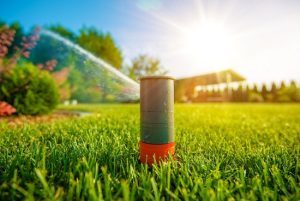 Spring
Spring 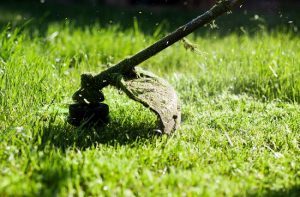 Keeping your lawn healthy and lush needs attention all throughout the year. Knowing what you can do and when you should do it is an important part of
Keeping your lawn healthy and lush needs attention all throughout the year. Knowing what you can do and when you should do it is an important part of 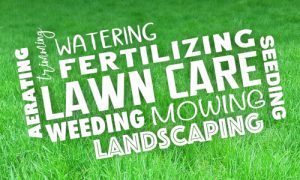 Maintaining a great looking lawn can be a big task since it needs trimming, cutting and fertilizing. If you want to leave it to the professionals, why not go for a reliable
Maintaining a great looking lawn can be a big task since it needs trimming, cutting and fertilizing. If you want to leave it to the professionals, why not go for a reliable 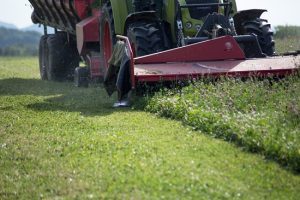 Lawn mowing can appear like a naturally easy
Lawn mowing can appear like a naturally easy  Although ants aren’t considered to be dangerous pests, they can cause significant damage to turf grass. It is important to control ants in lawns where they cause root damage and unappealing mounds. Such colony insects can come in huge numbers, creating intricate labyrinths within the grass roots. Here are some
Although ants aren’t considered to be dangerous pests, they can cause significant damage to turf grass. It is important to control ants in lawns where they cause root damage and unappealing mounds. Such colony insects can come in huge numbers, creating intricate labyrinths within the grass roots. Here are some  The majority of people fertilize their lawns with a single application in spring followed by a few more during the growing season.
The majority of people fertilize their lawns with a single application in spring followed by a few more during the growing season.  You might be curious to know when you will see lawn care results if you are just getting started with a
You might be curious to know when you will see lawn care results if you are just getting started with a 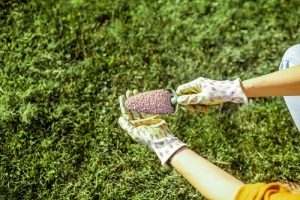 One of the most important tasks you have to do as a homeowner is maintaining your lawn and landscape. There are many
One of the most important tasks you have to do as a homeowner is maintaining your lawn and landscape. There are many  Although pre-emergent herbicides are an essential tool in a weed management program, timing their application can prove difficult. We’ll be discussing key
Although pre-emergent herbicides are an essential tool in a weed management program, timing their application can prove difficult. We’ll be discussing key